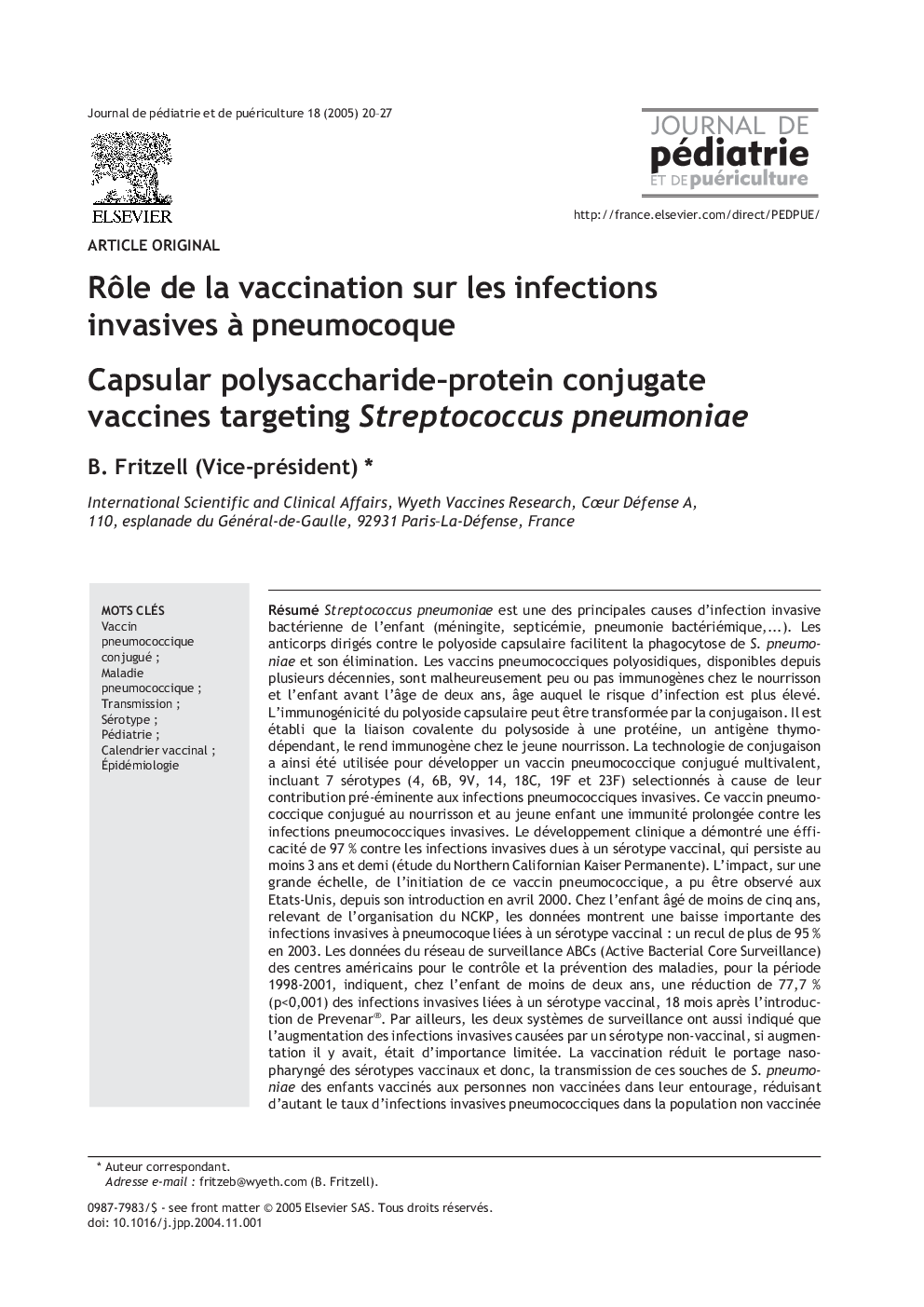| Article ID | Journal | Published Year | Pages | File Type |
|---|---|---|---|---|
| 9376081 | Journal de Pédiatrie et de Puériculture | 2005 | 8 Pages |
Abstract
Streptococcus pneumoniae is a principal cause of serious invasive infections of childhood, like meningitis, septicemia, bacteremia, or bacteraemic pneumonia. Antibodies to the capsular polysaccharide of S. pneumoniae facilitate clearance of pneumococcal organism through phagocytosis. Pneumococcal polysaccharide vaccines, which have been available for decades, unfortunately have limited or little to no efficacy in children younger than two years of age, who are at highest risk. The immunogenicity of bacterial polysaccharides can be significantly improved through conjugation. Covalent link of the polysaccharide to a T-cell dependent immunogen, a protein, has been shown to make the polysaccharide immunogenic in very young infants. Conjugation technology has been used to develop a multivalent pneumococcal conjugate vaccine, including seven serotypes (4, 6B, 9V, 14, 18C, 19F and 23F) selected for their pre-eminent contribution to invasive diseases (IPD). Immunization with this conjugated pneumococcal vaccine confers to infants and young children protection that is long lasting against invasive pneumococcal disease.The clinical development program established that the protective efficacy was 97% against invasive pneumococcal disease caused by vaccine serotypes and was maintained for at least 3.5 years (Northern California Kaiser Permanente study, NCKP). It has been possible to evaluate the large-scale impact of this pneumococcal vaccine since April 2000 when it was introduced in the USA. In children aged less than five years, data show a dramatic fall in invasive disease due to vaccine serotypes within the NCKP system: a decrease over 95% by 2003. Data from the Active Bacterial Core Surveillance (ABCs) Network of the U.S. Centers for Disease Control and Prevention for 1998 to 2001 reveals a reduction of vaccine serotype IPD of 77.7% (P <0.001) in children less than two years of age during the 18 months following the introduction of Prevenar®. In both surveillance settings, the data also indicate that, the increase, if any, in invasive disease caused by non-vaccine serotypes is of limited magnitude. Vaccination reduces the nasopharyngeal carriage of vaccine serotypes and decreases the likelihood of transmission of these S. pneumoniae strains from vaccinated children to unvaccinated neighbors, thereby lowering the rates of IPD in the non-vaccinated community (herd protection). Consequently NCKP and ABC s data indicate an overall decrease in IPD among older children and adults (anyone greater than five years of age). In conclusion, the protective efficacy of Prevenar®, the individual direct protection as well as the indirect herd protection, is well established. Those findings offer promising perspectives for the prevention of pneumococcal infections in France.
Related Topics
Health Sciences
Medicine and Dentistry
Perinatology, Pediatrics and Child Health
Authors
B. (Vice-président),
